At the ‘UFO capital of Kansas,’ a celebration of the weird and wonderful
GENESEO — Welcome to Dimension G.
Once you enter the Geneseo City Museum, it takes a few minutes to adjust to the high strangeness contained within. Never mind the creepy ventriloquist dolls in the corner staring at you with their dead eyes. What you’ll really want to concentrate on is the UFO Room, where you’ll find hair of a dog from Venus, spring water preferred by interplanetary travelers, and blueprint-like drawings from an entire fleet of craft from Venus, Mars and beyond.
At least that’s what the man who collected these things believed, and the museum has done its best to preserve the imagination and personality of Elmer D. “Doc” Janzen. He was a chiropractor, minister, ventriloquist, inveterate collector and fervent believer that earth was visited frequently by interplanetary beings, who happened to look just like us.
“We knew this collection was really unique in the state of Kansas,” said Jim Gray, a local author and historian who is chairman of the museum board. “We began to search around for the idea whether there was such a thing as a UFO capital in Kansas, and no one was claiming it, so our city council did a proclamation in 2022. So off we went.”
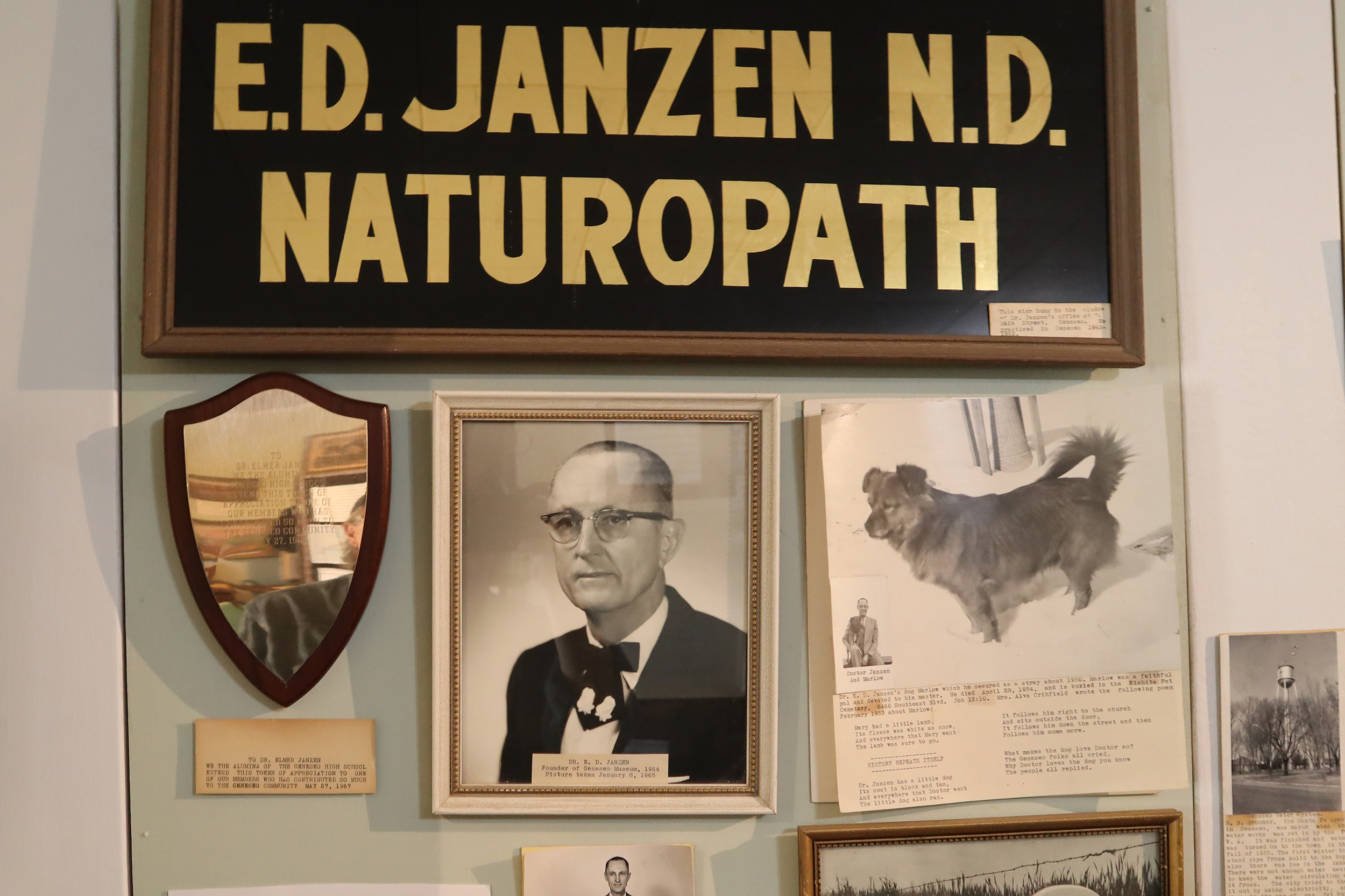
High strangeness
The museum is a time capsule of the UFO craze of the 1950s and 1960s, when popular culture was heavily influenced by science fiction films like “The Day the Earth Stood Still.” Flyer saucers had been a national obsession since 1947, when private pilot Kenneth Arnold reported nine crescent-shaped objects flying over Mt. Rainier. Arnold’s story was widely carried in newspapers, and journalists transformed his description of the objects into “flying saucers.” It wasn’t long before ordinary Americans also reported seeing unexplained flying objects, but their shapes varied widely.
“A few reports describe objects that are not disk shaped at all but are cylindrical, conical, spherical, oval V-shaped, and even resembling a propeller,” writes author Thomas Bullard in a 2010 book published on the UFO phenomenon by the University of Kansas Press. “Some disks included fins, domes, and projections, others present the appearance of a thick or convex disk, a sight like an overturned washtub, or in the report of a young private pilot flying over North Carolina, a form like a squashed barrel.”
It’s these unusual shapes you’ll find depicted at the museum, including some that look like fish. A cult hero of 1950s flying saucer lore was Buck Nelson, a farmer from Mountain View, Missouri, who lived alone with a white shepherd dog and an old horse and claimed aliens gave him rides on their spaceships to the moon, Venus and Mars. His accounts are filled with what UFO buffs called “high strangeness” — animals behaving oddly, blasts of light, a miracle cure for his lumbago. The humanoid aliens were attracted to the water from an Ozark spring nearby, he said.
The UFO Room has plenty of Nelson memorabilia, including a slim book Nelson wrote that claims Christianity is common in the cosmos and boasts a couple of commandments we don’t have down here. One says your body is God’s so don’t abuse it, and the other is about giving thanks for what we have. Personally, I’d like to see a 13th commandment about critical thinking, but Buck’s story drew hundreds of people to an annual UFO festival at his farm. He was never as famous as other purported contactees, such as George Adamsky, but he seems central to Janzen’s cosmic theology.
Back then, the aliens looked like us rather than the frightening grays of more modern abduction tales. In Janzen’s world — sorry, universe — the aliens had revealed themselves in an attempt to persuade mankind to abandon nuclear weapons, because such devices threatened not only the earth, but the cosmos.
The history of science fiction is rife with extraterrestrial monsters, from the heat-ray wielding Martians of “War of the Worlds” to the bugs of Robert A. Heinlein’s “Starship Troopers.” But Janzen’s aliens were not out to destroy the world but to save it. This is why the walls of the UFO Room, and several other displays, feature photographs of mushroom clouds.
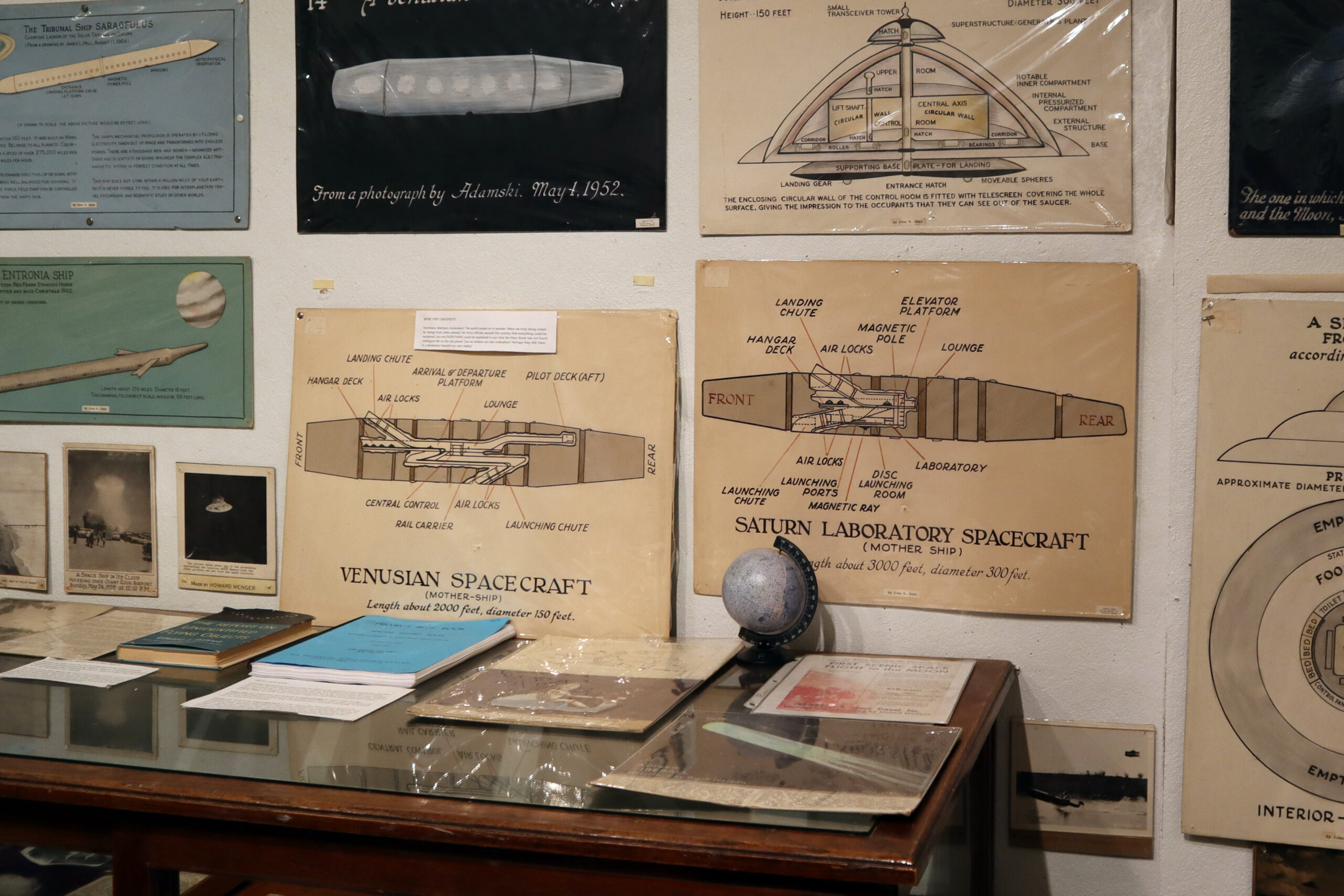
‘The Geneseo secret’
The chiropractor opened the museum in 1964. After his death in 1977, at age 75, the museum passed to the city. Gray, the local historian, told me every inch of the house was crammed with city history, and even the walls were covered with thumb-tacked photographs of ordinary people who had lived in Geneseo.
Geneseo is 90 minutes northwest of Wichita. It’s a town of about 200 that is now a ghost of its former self, where the high school that closed in 1980 stands silently waiting for students who will never return. A freshly painted water tower (silver sides, green top) presides over a downtown dotted with vacant buildings with windowless faces, longing perhaps for the days when the town was on the Missouri Pacific main passenger line between Kansas City and Pueblo, Colorado. When Gray was growing up, he recalled, there were three hotels and several restaurants here. Now, there’s not even a place to get a snack, except perhaps for the convenience store on Kansas Highway 4 at the north end of town.
Geneseo was founded in 1886 during the expansion of the Missouri Pacific and was named by a railway director for Geneseo, Illinois. Artifacts of the city’s railway past are found throughout the museum, including the town sign from the original depot. The city is still served by a shortline railroad, the Kansas & Oklahoma, but freight traffic is light.
The Little Arkansas River originates near the town. A number of archaeological sites, about four miles southeast of town on private property, have been placed on the National Register of Historic Places. These sites, whose address is kept secret to prevent looting or other disturbances, are believed to be part of a larger collective settlement of First Peoples dating back at least 500 years. It’s possible the site was visited by Coronado during his 1541 expedition to find the fabled golden city Quivira, according to the National Park Service, because 16th century chain mail was found there. Not far from the village sites is a 160-foot-long Serpent Intaglio, an image of snake with what may be an egg or ball in its mouth, carved into the prairie.
“Most people in Geneseo thought the whole (alien) idea was crazy and thought Doc was a crackpot for giving it any credence,” Gray said. “After he was gone, they respected the fact that he had collected so much stuff and it was still on his walls, but no one talked about it. So it was kind of like the Geneseo secret.”
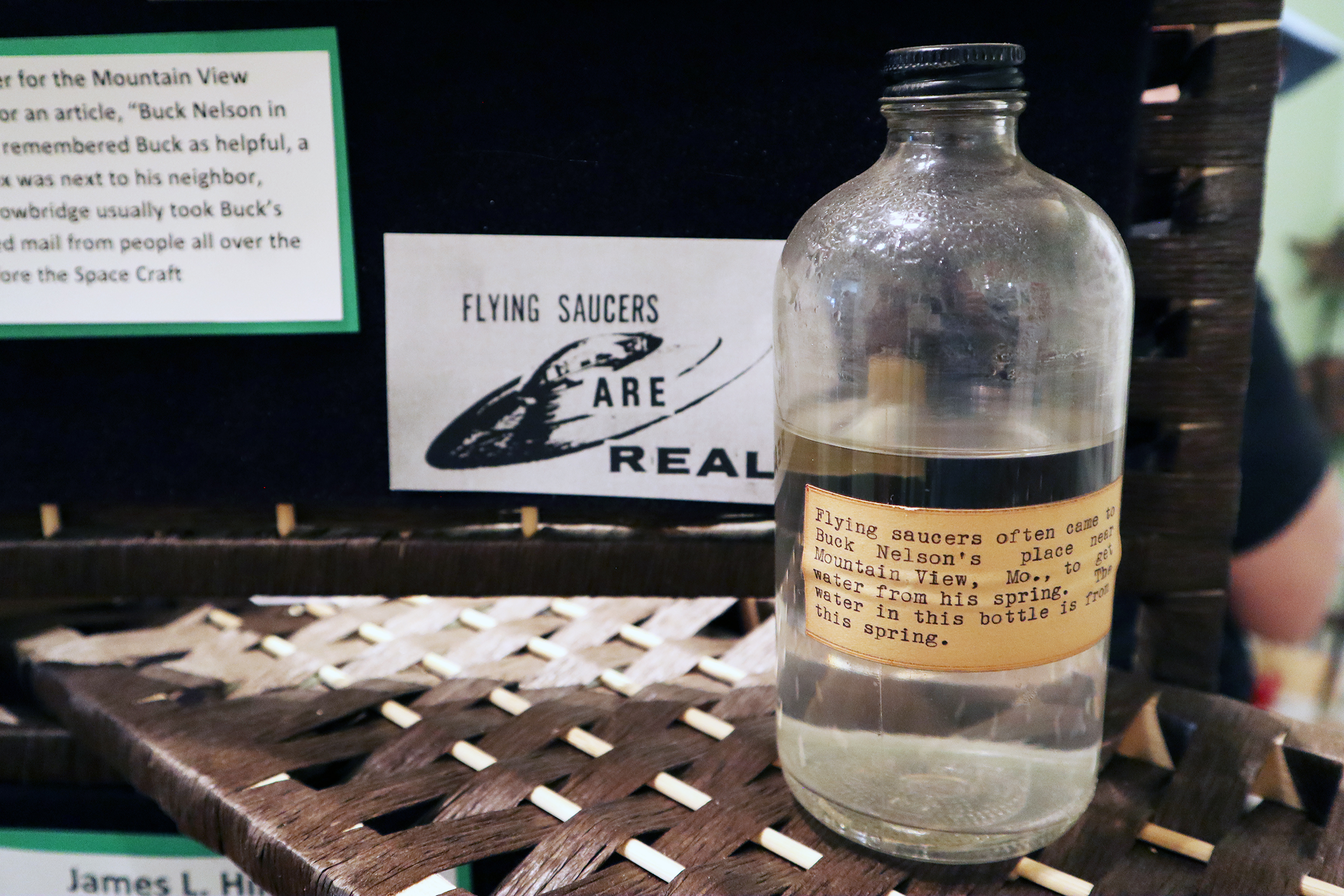
A beam of light
Gray is sympathetic to messages of strangeness and hope because he, too, had a UFO experience.
“I had this experience in 1972 when a beam of light came out of the sky and lit up the inside of my car,” he said. It was a drowsy summer night. He was driving a two-door Impala, he recalls, just south of Geneseo, and his future wife, Robyn, was in the passenger’s seat. “And as I looked up, that’s when the beam just receded into the sky.”
There were a lot of UFO sightings in western Kansas in 1972, Gray said.
“I wouldn’t say it changed my life at the time,” he said. “Not at all. It just scared me that night. It may have had an effect on me, but it wasn’t too noticeable because I’m a little bit out there on the edge anyway.”
Dighton, in far western Kansas, was the center of the state’s UFO activity in 1972. Local police were reported to have chased strange lights in the sky at up to 100 mph — but they never caught up with them.
The most famous Kansas UFO encounter occurred Nov. 2, 1971, at Delphos, when the Johnson family was allegedly visited by a glowing, mushroom-shaped craft. The next year, the family was awarded a prize of $5,000 by the National Enquirer tabloid for the “most valuable” scientific evidence of an alien visitation.
Kansas also had its share of excitement during the cigar-shaped airship scare of the 1890s, which stretched from Texas to Chicago. In 1897 farmer Alexander Hamilton reported that a craft with humanoids aboard visited his pasture near Leroy, in eastern Kansas, and snatched some of his cattle into the air. Most researchers now ascribe the Leroy sighting, and many other sightings at the time, to the imaginations of bored railroad telegraphers and devilish newspapermen.
Still, there are plenty of historic sightings that remain unexplained. There’s enough mystery surrounding the 1947 Roswell incident that it has generated a cottage industry of books and television documentaries. Something strange happened there, I’m convinced, although I’m not sure it involved space aliens. More recently, the debate continues with the Pentagon’s release of footage of unexplained objects captured on camera by Navy pilots. Something is out there, but what?
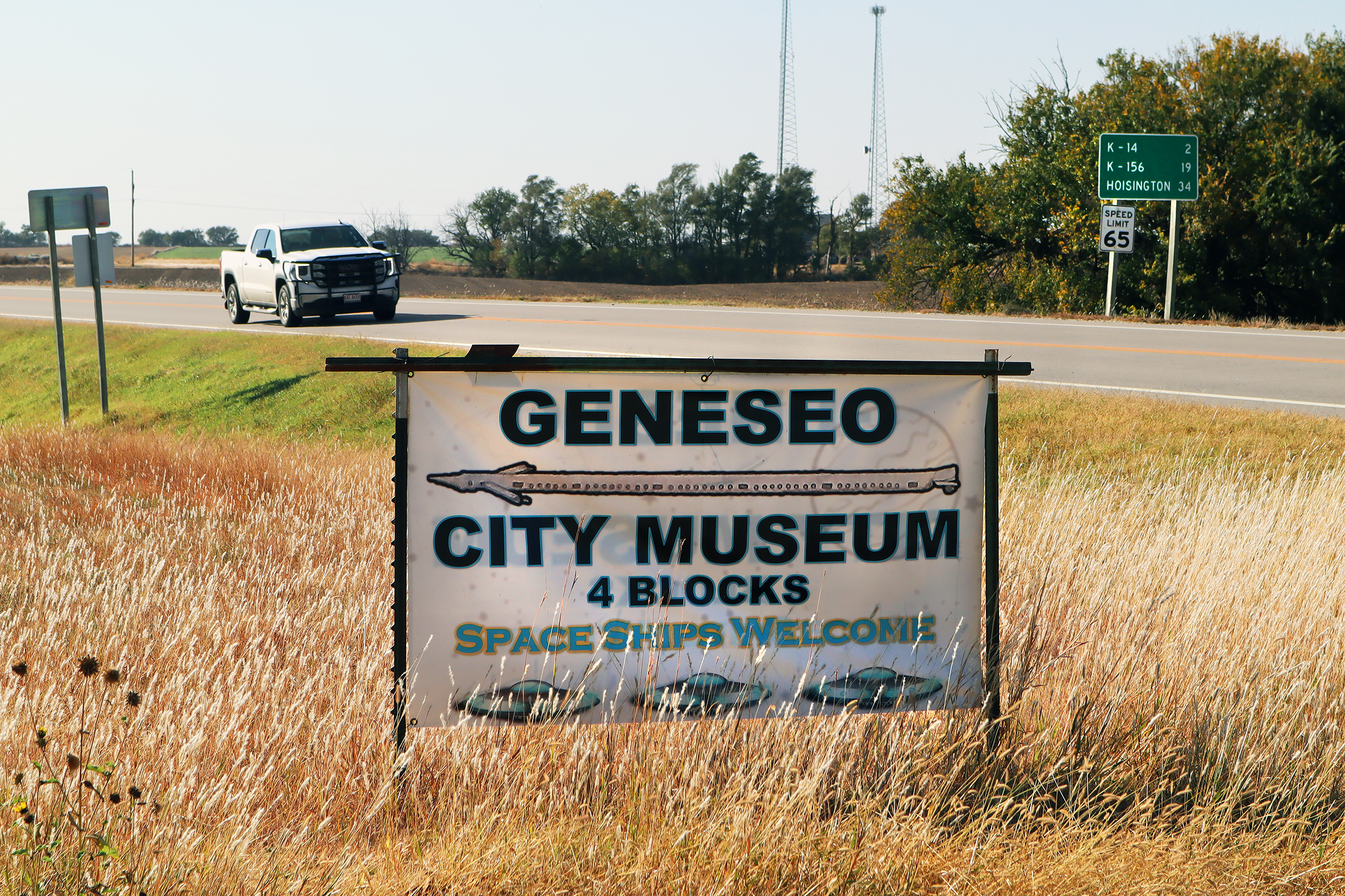
‘War of the Worlds’
In my mass communication classes, I used to teach that cycles of fascination with alien invasion were tied to periods of uncertainty and change in world culture.
While reports of beings from the sky go back to the earliest historical records, the contemporary fascination with intelligent and perhaps hostile life from other worlds goes back to the 1898 H.G. Wells novel, “War of the Worlds.” At that time, the world-changing event was the coming collapse of British imperialism.
Four decades later, on Oct. 30, 1938, Orson Welles adapted the story for a contemporary American radio audience and did so well he scared the wits out of some listeners. The drama has been celebrated as a great radio “hoax,” although there were plenty of clues for careful listeners that it was fiction. The cultural anxiety then, of course, was the closing years of the Great Depression and the runup to World War II.
“War of the Worlds” was made into a blockbuster Hollywood special-effects movie in 1953, at the beginning of the Cold War. It still had the power to scare me a couple of decades later, when as a kid I watched it on television.
But the best adaptation is Steven Spielberg’s, which in 2005 stripped away the cast of scientists and journalists and instead cast Tom Cruise as an American everyman trying to save his family. The release was just four years after 9/11, and I cannot forget the victims of the Martians being reduced to ash in the film.
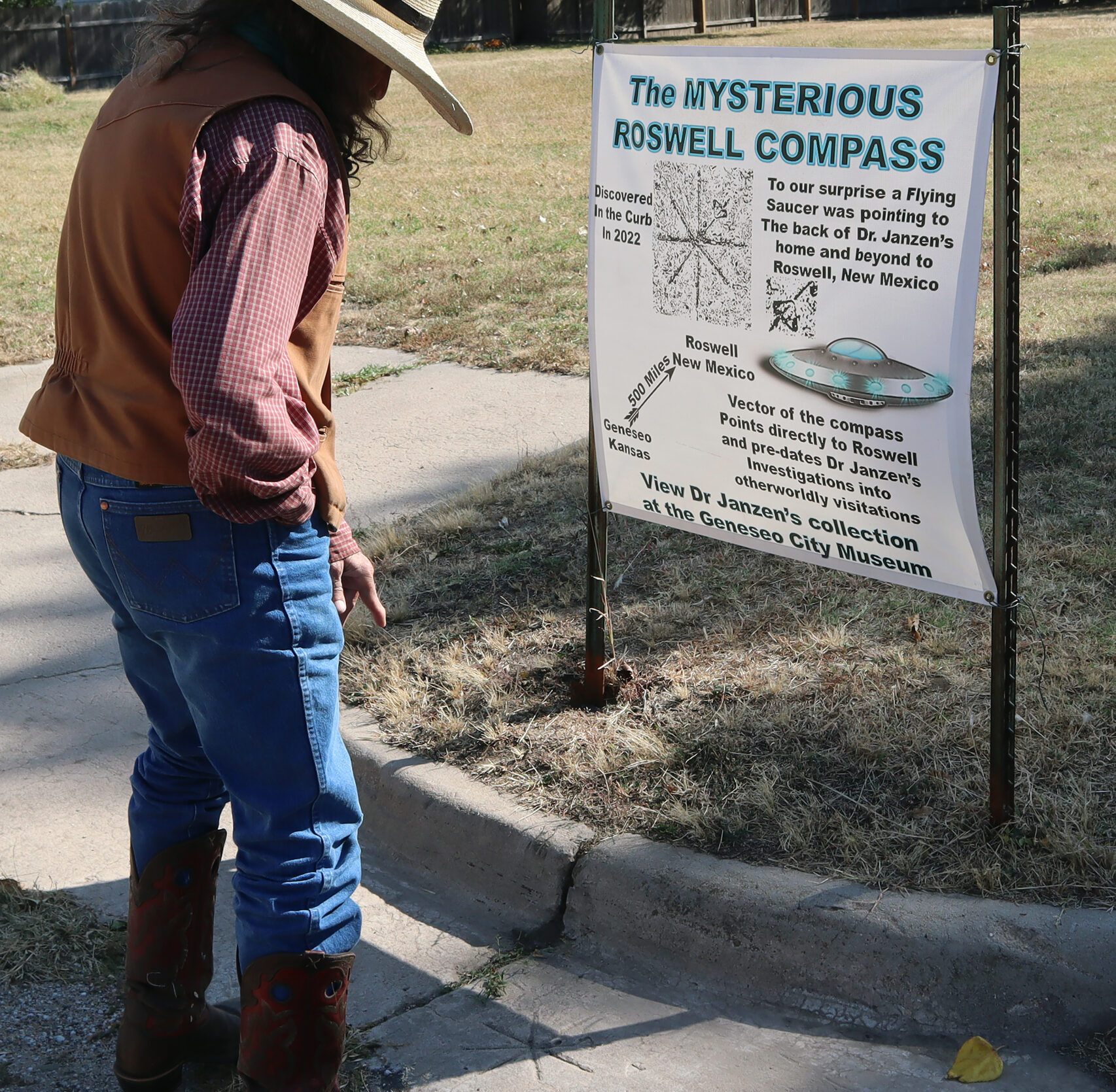
500 miles to Roswell
There is an enigmatic marking in the concrete outside the museum, Gray said, that was discovered when they were preparing for the first World UFO Day. It’s in the curbing that was likely poured in the 1940s, he said, and it resembles a compass, with a UFO-shaped object pointing the direction of Roswell, 500 miles away.
I examined the “Roswell Compass,” but was unsure if it had any special meaning. It could have been an asterisk or a marking for buried utility lines or just the result of boredom and wet concrete.
The interpretation of the symbol, like the rest of the museum, is highly subjective. It might all be hokum, but if so it is a relatively benign version. Nobody is being scammed with false promises of contacting dead loved ones. And at least the place is authentic, rough edges and all. The museum seems a fitting tribute to a local eccentric who appeared to have a sincere desire for world peace, even if it included folklore about space brothers and sisters.
“This is the kind of thing that will draw people in from outside the community,” Gray said of the museum.
After the council declared the town the UFO capital, several hundred people attended a local event for “World UFO Day” on July 2. Annually, Gray said, the museum has a couple of thousand visitors, and donations from out-of-towners are much needed.
“We’re not going to survive with community money,” he said. “We just won’t.”
The museum, at 907 Silver Ave., is open from 2 to 5 p.m. the second Saturday of each month. Its next scheduled opening is Nov. 11, but Gray said the museum also opens by appointment. The number to call is (785) 531-2058.
Don’t forget to grab a “Dimension G” tee-shirt on your way out.
Max McCoy is an award-winning author and journalist. Through its opinion section, the Kansas Reflector works to amplify the voices of people who are affected by public policies or excluded from public debate. Find information, including how to submit your own commentary, here.
This article has been archived for your research. The original version from Kansas Reflector can be found here.


